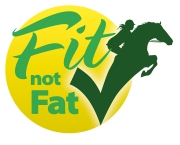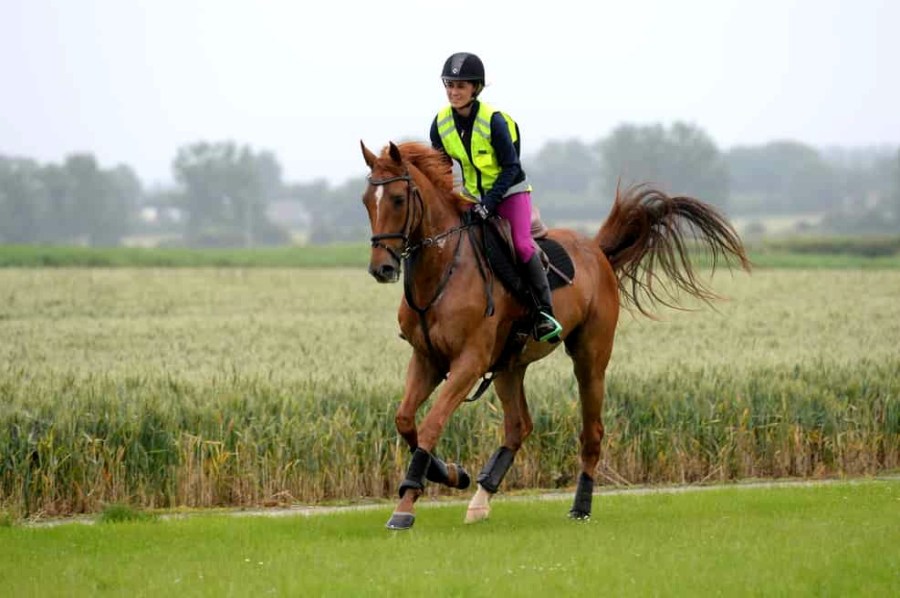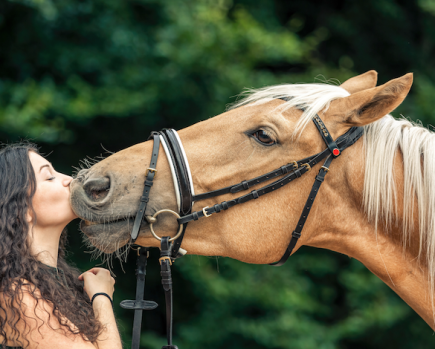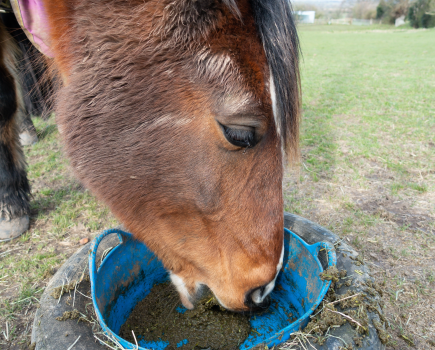Interval training is a really effective way to work your horse, whether you compete or not. It saves times, burns calories, builds fitness, reduces the risk of injury and adds variety to their exercise. Alongside providing your horse with a correct diet, interval training is also a brilliant way to encourage weight loss and help maintain a healthy weight, so that your horse is fit rather than fat.
“Interval training is designed to strengthen the horse’s muscles and cardio-respiratory system through a gradual increase in exercise intensity,” explains vet and racehorse trainer Dr Jeremy Naylor.
“In basic terms, it is where you break the training exercise up into several bouts of moderate to high intensity exercise, as opposed to achieving the same exercise volume all in one go.”
How does it work?
When getting a horse fit, they are only able to maintain intense levels of activity for a short period before needing a period of recovery. If a horse is forced to continue at the intense level, their heart rate will rise, anaerobic respiration will kick in, and they will become fatigued.
Interval training works by the horse doing repeated spells of exercise combined with periods of partial recovery where the horse is allowed to slow down and almost recover their pre-work pulse rate, before going on to the next interval of faster work.
“Not allowing the horse’s pulse rate to drop completely to its normal level during the rest periods strengthens their muscles, heart and lungs, and helps the horse to adapt to the stress placed on them. This makes them better able to cope with exercise next time it occurs,” explains Jeremy.
“All basic training is based on the overload principle: you have to push the biological system, whether that be the cardiovascular or muscle system, beyond its current capacity.”
How effective is it?
Interval training develops the horse’s respiratory and circulatory systems. The heart is able to pump more blood around the body, providing the muscles with oxygen more efficiently and delaying the onset of the anaerobic phase.
“You are pushing systems to a sufficient extent to get an effective adaptation without risking damaging those systems and muscles, tendons and ligaments,” advises Jeremy.
Is uphill work best?
“In racing, we often use a stiff incline or hill to train horses up, and this is because by going uphill, you don’t need to work at nearly the same speed to achieve the high work rate,” says Jeremy.
“As you go faster, the load on the horse’s limbs increases, so being able to work at relatively slow speeds for higher work rates is one of the benefits. However, it does put different loading on different parts on the body, which is why it’s important to allow the horse to adjust to it, rather than asking a horse who has never galloped uphill to suddenly do it three times in its first session.”
How fast should I go?
“One key rule for interval training is that there is no real advantage of sticking to walk and trot: horses need relatively high intensity periods of exercise to push the systems. You need to be cantering or galloping unless you are walking or trotting up steep slopes.”
Where should I do it?
Interval training can be done anywhere. Gradually build up the work as your horse becomes leaner and fitter.
“You can use fields and bridleways or gallops and arenas,” says Jeremy. “Out hacking, if there are suitable places to canter, you could standardise the speed and distance and then gradually build up.
“In the arena, canter round a certain number of times on one rein and then again on the other and measure the speed and heart or breathing rate.”
Will it work for my horse?
It is important to choose a programme specific to your horse’s requirements. This will vary according to their age, breed, current fitness level and whether they are overweight.
Also take into consideration whether the horse has ever been fit before, as well as what your ultimate goal is in terms of competition or event. You can then establish where you do the exercise and then the distances, the speed and intensities, and then the repetition and time in between for partial recovery.
What if my horse is a heavy type?
“Galloping doesn’t come as easily to warmbloods and heavier breeds compared to Thoroughbreds, and structuring the work to build them up gradually is important,” cautions Jeremy. “If you push them too hard too soon, you get sour horses and risk injury.”
Before you start, your horse should be able to walk, trot and canter. You can then start introducing interval training gradually.
“Start sensibly at a working canter and make a note of the horse’s speed and heart rate,” adds Jeremy. “That can be your baseline to improve on.”
Some horses will need more work for the same level of fitness than others.
“Not all horses find galloping easy, especially if they spend a lot of time in the arena. You can motivate them to gallop by running them upsides another horse, and keep the exercises varied so they don’t get bored.”
How often should a horse do interval training?
“You don’t want to be doing interval training every day — you need to allow recovery periods to bring about training adaptations,” advises Jeremy. “The most you should do it is every other day or two or three times a week for relatively intensive training.”
Remember, it is a lot easier maintaining a horse’s fitness compared to getting them fit.
“Maintain the quality of the exercise but reduce the quantity,” adds Jeremy. “You might only do two canters instead of three in each session, and keeping speed rather than distance.”
Example interval training programmes
- Low intensity: 3 sets of 1min trot or canter and 5mins walk
- Medium intensity: 4 repetitions of 3mins canter and 3mins walk
- High intensity: 5 repetitions of 4 mins canter and 2mins walks
The golden rule is don’t do too much too soon, and allow your horse time to recover between sessions. You should also choose the surface you are riding on carefully, and vary the terrain as much as possible.
Warming up and cooling down properly are essential when interval training a horse, as it is with any type of exercise, to help prevent injury.

Have you heard about Your Horse’s #FitNotFat campaign? Equine obesity is an enormous welfare problem and we’re on a mission to provide owners and riders with the knowledge, skills and information you need to keep your horse in tip-top health. It could be life saving! Find out more
Main image © Your Horse Library/Kelsey Media Ltd









